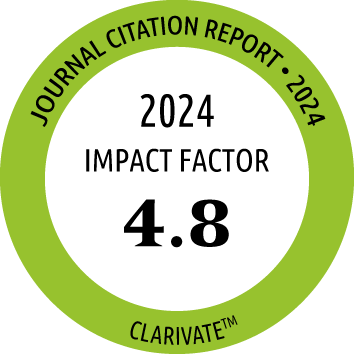Return to content in this issue
Mepolizumab Reduces Inflammatory Eosinophils in Nasal Polyp Tissue and Restores Histological Alterations
Matucci A1*, Accinno M2*, Maggiore G3, Brugnoli B2, Vivarelli E2, Cosmi L2, Parronchi P2, Perlato M2, Milanese ME2, Licci G3, Rossi O2, Minzoni A3, Orlando P3, Gallo O3, Palomba A4, Ammatuna C4, Tatti T4, Vultaggio A2
1Immunoallergology Unit, Careggi University Hospital, Florence, Italy
2Department of Experimental and Clinical Medicine, University of Florence, Florence, Italy
3Otolaryngology Clinic, Department of Clinical and Experimental Medicine, University of Florence, Italy
4Department of Pathology, Careggi University Hospital, Florence, Italy
*AM and MA contributed equally to the paper.
J Investig Allergol Clin Immunol 2026; Vol. 36(4)
doi: 10.18176/jiaci.1095
Background: Eosinophilic inflammation and IL-5 are key therapeutic targets in type 2 chronic rhinosinusitis with nasal polyposis (CRSwNP). Based on surface expression of CD62L, 2 eosinophil subpopulations, homeostatic and inflammatory, were recently described.
Objectives: First, we aimed to investigate the association between these subpopulations and the severity of CRSwNP, and second, to analyze the impact of mepolizumab on tissue eosinophil subpopulations.
Methods: Flow cytometry of nasal polyp (NP) tissue eosinophil subpopulations (CD62Llow, iEos; CD62Lbright, rEos) was performed in 15 CRSwNP patients (with and without severe asthma) treated with mepolizumab for a median of 7.5 months. NP tissue was analyzed at baseline and after the start of therapy. The correlation between the proportion of tissue iEos and the severity of CRSwNP and treatment response was assessed.
Results: The proportion of tissue iEos correlated with higher CRSwNP severity scores and quality of life questionnaire scores (SNOT-22, L-K score) at baseline. A higher and significant improvement in NPS was observed in patients who had been taking mepolizumab for longer than 6 months. Mepolizumab significantly reduced the proportion of iEos in nasal polyp tissue, although a significantly higher number of rEos remained. A greater reduction in tissue iEos was associated with a more significant improvement in quality of life (SNOT-22) and severity (L-K) scores. Finally, in addition to the reduction in tissue eosinophils, mepolizumab induced histological changes characterized by the decrease in edema and goblet cell hyperplasia.
Conclusions: Tissue iEos values correlate with poor sinonasal control in CRSwNP and are reduced by treatment with mepolizumab. A greater decrease in iEos is associated with a significantly greater therapeutic effect of mepolizumab.
Key words: Asthma, CRSwNP, Eosinophil subpopulations, Mepolizumab, T2 inflammation
| Title | Type | Size | |
|---|---|---|---|
 |
doi10.18176_jiaci.1095_supplemental-materials-figure.pdf | 302.04 Kb | |
 |
doi10.18176_jiaci.1095_supplemental-materials-table.pdf | 245.38 Kb |




